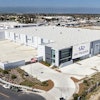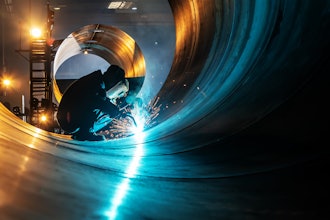GE’s New Fuel-Blending System Cuts Costs, Boosts Efficiency for Gas Turbine Users
ATLANTA, GA.—August 15, 2011—Fuel flexibility and efficiency are critical issues facing gas turbine owners and operators in today’s highly competitive environment. Responding to these industry needs, GE (NYSE: GE) has introduced flexible fuel-blending technology for its Frame 7FA Gas Turbines that enables turbine operators to lower their fuel costs and overall operating expenses by reducing the amount of natural gas fuel required by the turbines, while also offering a more efficient use of process gases.
The first application of this new system is four GE Frame 7FA Gas Turbines at Dow Chemical Company’s Plaquemine, La., facility.
This new technology enables the blending of up to five percent hydrogen into a GE dry low NOx (DLN) 2.6 combustion system. This enables customers to use hydrogen gas that is a byproduct of a petrochemical process as part of the fuel mix for a 7FA Gas Turbine. The new product joins GE’s portfolio of service offerings designed to help customers meet today’s challenges by helping to operate their power plants cleaner, smarter and more efficiently.
The GE fuel-blending system includes hardware required for mixing the gases, instrumentation for measuring the gas compositions and controls to maintain the proper fuel flow into the gas turbine. No physical changes were made to the gas turbine compressor or hot gas path. The validation of this technology has demonstrated that the Frame 7FA Gas Turbine combustor can accommodate variations in fuel composition and meet all operability, emissions and performance needs.
“Working with GE, we were able to use excess process gas more efficiently, which has reduced the amount of fuel required to power the turbines,” said Fred Moore, global director of manufacturing & technology, energy, Dow Chemical. “The startup of the system on the first unit went as planned and now is operating, meeting our expectations.”
To date, three of the four units are operating on blended fuel, with the fourth unit to operate on blended fuel later this summer. To date, these units have accumulated more than 5,100 hours on blended fuel.
“Our new fuel blending solution allows operators to use process gas to displace a portion of the natural gas fuel, thereby reducing natural gas usage and fuel costs,” said Jeffrey Goldmeer, F-platform fuel flexibility manager for GE Power & Water. “The fuel-blending system is the latest example of GE’s commitment to continually upgrade and evolve F technology to meet the changing needs of our customers worldwide.”
GE’s fuel-blending system for the 7FA allows the use of process or waste gases in a high-efficiency power generation platform instead of having to use the process gas in a lower efficiency system, such as a duct burner. It also can reduce the need to dispose of the process gas by flaring.
The new hydrogen fuel-blending system has been initially designed for use with GE’s advanced 7FA Gas Turbine, part of GE’s worldwide fleet of F-class gas turbines, which has compiled more than 35 million hours of service.
About GE
GE (NYSE: GE) is an advanced technology, services and finance company taking on the world’s toughest challenges. Dedicated to innovation in energy, health, transportation and infrastructure, GE operates in more than 100 countries and employs about 300,000 people worldwide. For more information, visit the company's Web site at www.ge.com.
GE also serves the energy sector by providing technology and service solutions that are based on a commitment to quality and innovation. The company continues to invest in new technology solutions and grow through strategic acquisitions to strengthen its local presence and better serve customers around the world. The businesses that comprise GE Energy—GE Power & Water, GE Energy Services and GE Oil & Gas—work together with more than 90,000 global employees and 2010 revenues of $38 billion, to provide integrated product and service solutions in all areas of the energy industry including coal, oil, natural gas and nuclear energy; renewable resources such as water, wind, solar and biogas; as well as other alternative fuels and new grid modernization technologies to meet 21st century energy needs.
SOURCE
















